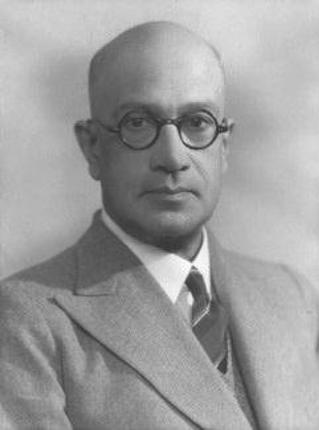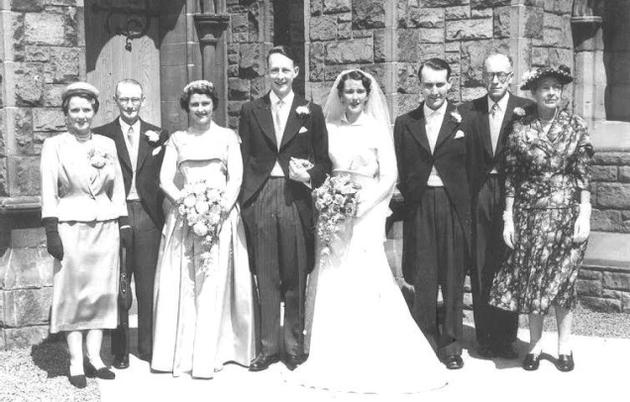
A double V C and a H C
Searching for some information the other day I was delving into The Madras Tercentenary Commemoration Volume when I noticed that there had been an officially constituted Madras Tercentenary Celebration Committee in1939 and that it had been chaired by a Dewan Bahadur S E Runganadhan. The name struck a chord and I recalled having written briefly about him in his role as Vice Chancellor of the University of Madras. It was as Vice Chancellor (1937-40) that he had ensured the publication in 1939 of the 20,000-word addendum to the Tamil Lexicon (1924-1936). And it was while Vice Chancellor that he had steered the celebrations of Madras’s 300th birthday, which included the publication of the Tercentenary Volume and a History of Madras by Rao Saheb C S Srinivasachari who had been the first Professor of History at Annamalai University.
Srinivasachari’s Vice Chancellor at Annamalai University had been its first, Samuel Ebenezer Runganadhan (1929-35). Starting from scratch, Runganadhan had developed at Chidambaram the country’s first private university to a level of the country’s pioneering ones — Calcutta, Bombay, Madras and Allahabad. Runganadhan had come to Annamalai after heading a college and teaching English at Presidency from 1908 to 1915 and heading that famed Department from 1919 to 1929.
The quintessential ‘brown sahib’ in immaculate Western attire, speaking impeccable English perfectly pronounced, and displaying the elegant manners of English gentry, he was considered a better teacher of English than any Englishman. It was only his occasional outbursts of temper over carelessness and shoddy work that cracked the veneer, it was said. But it was also said that it was the standards that he set that helped Annamalai University sink deep roots and grow into an institution of repute, a reputation unsullied until recent years.
Invited to serve on the Council of the Secretary of State for India in 1940, Runganadhan moved to London and from there it was but a step to being appointed High Commissioner of the Government of India in 1943, the year he was knighted. He was succeeded by V K Krishna Menon in 1947, who became Independent India’s first representative in the U.K.
The years immediately after the end of the war in Europe saw Indian students wanting to come to the U.K. for higher studies; the U.S. had not yet been ‘discovered’. But with its own war veterans returning to civvy life and Britain’s limited number of universities and polytechnics having to cater to them, Sir Samuel had his hands full trying to find seats for Indian students (I was one he couldn’t help) — especially with all the pressures being exerted on him. Getting Indian victims of the war — the wounded in hospitals, stranded sailors from torpedoed ships, and released prisoners-of-war — back home with the limited passages available was another problem that he had to tackle. And not least of all, he had to ensure the supplies India’s nascent industries needed. But he coped and survived and returned to India to enjoy a long retired life involved with various Christian activities like the Christian Medical Colleges and the YMCA.
The Best cricketers
The mention of A W Stansfeld of Best & Co in this column on June 13 reminded me of an era when the British business houses expected their ‘officers’ (they’re ‘executives’ nowadays) to be members of clubs and participate in the activities of such institutions, particularly in sport. Stansfeld’s firm (later Best & Crompton) was one of the most sports-minded of the lot and contributed significantly to Presidency teams and sports administration. Stansfeld, like Robert Carrick, Robert Denniston (later to be knighted) and E K Shattock, played cricket for the State and was to later say that the fact that he enjoyed playing cricket had a great deal to do with his being recruited by Denniston.
When Stansfeld sailed for India in 1937, Best’s London representative cabled Madras, “Sending A W Stansfeld. Left hand bat, played Kent Second Eleven.” Hastening Stansfeld’s departure from London was the fact that he was needed to replace Raymond King who was going on Home Leave. King himself was to remember his arrival in Madras at about 9.30 a.m. on a Sunday morning in January 1929. No sooner had he sat for breakfast with a colleague in the chummery, there was a call for him. It was from Denniston. “The A team (Madras Cricket Club) is one short,” said the legendary Denniston (Miscellany, July 28, 2003) after the usual warm welcome. “Would you be a good chap and join us?” And, since you don’t say ‘no’ to the boss even if you have spent two nights on the train for Bombay, there was R M King, later to be Chairman and Managing Director of the Company, on the field at 11.30 a.m.! He goes on to recollect, “At lunch, I signed the membership form and by 6 pm the following day I performed a similar action for the Gymkhana Club as I was required to play rugger against HMS Emerald on the Thursday of my first week.”
The most talented of the Best cricketers was, however, the burly Robert Black (Bob) Carrick. The ‘Four Musketeers’ of early Madras cricket were Daniel Richmond (also to be later knighted), Robert Denniston (Denny to all), C P Johnstone and H P Ward, the former two for their administrative contributions though their cricketing role was not insignificant, the latter two for their cricketing prowess, making the two Oxbridge Blues amongst the best ever in Madras cricketing history. But if they were the musketeers, they needed a D’Artagnan. And that was Bob Carrick.
Carrick, described as the ‘Jessop’ of Madras cricket and a player who could hit sixes on request, it was said, played for the Presidency for 18 years, including turning out against A E Gilligan’s team in 1927. C Ramaswami described this public school (Winchester) product as “the idol of the crowds”, a “natural cricketer who lifted the ball over the ropes with ease. His off-drives and hits to the long-off and long-on were pleasing to watch. Brilliant in fielding, his medium paced bowling was often used.” But typical of the best sportsmen of the age, Carrick was an outstanding all-rounder.
By 1929, Carrick had won the South India Golf Championship at Ooty nine times, on every occasion he participated. He played hockey for the MCC’s title winning teams, he muddied himself at rugby and soccer for the Gymkhana Club in championship events, and was a regular at the South Indian Tennis Championships. They don’t make them like that any more.

A picture out of the past
Prof. Rani Siromoney of Madras Christian College sends me this wedding picture from the past through Prof. Joshua Kalapati, the chronicler of MCC, as a reminder of the connection Prof. Tom Kibble, F.R.S., internationally renowned mathematical physicist, who passed away recently, had with MCC. He was the son of Prof. Walter Frederick Kibble, the third head of MCC’s Department of Mathematics and Natural Philosophy, a department Kibble Sr. served from 1924 to 1961. His wife Janet was head of the women’s hostel in Guindy.
Tom Kibble was born in Madras, when MCC was in George Town, and grew up in Tambaram till he left for the U.K. for higher studies in the 1940s. In Madras, he schooled at Doveton Corrie. I wonder how many there remember him.
Walter Kibble was the mentor for several students who went on to teach at MCC, like Rani and Gift Siromoney and George Abraham.
Today’s picture of Tom Kibble’s wedding dates to 1957 and on the extreme right are Walter and Janet Kibble.
source: http://www.thehindu.com / The Hindu / Home> Features> Metroplus / by S. Muthiah / June 19th, 2016